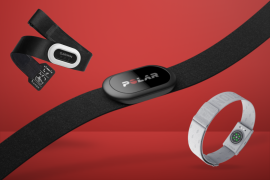How Apple developed the Watch Ultra’s advanced endurance and workout features
We talked to Apple about how it developed the Watch Ultra's dual-frequency GPS, advanced battery life and the reason for the action button

Apple Watch Ultra is the first major ground-up redesign of the Apple Watch as we know it. When Apple suggested that Stuff sat down – well, virtually – with three of its vice presidents to ask questions about the key sensors on the new device, we jumped at the chance.
We spoke to Stan Ng, vice president for Apple Watch marketing, Ron Huang, vice president for sensing and connectivity and finally Jay Blahnik, vice president of fitness technologies (Blahnik’s background looks like the Fitness+ studio – if you’ve used it you’ll know exactly the kind of room we’re talking about).
But seven years into the life of Apple Watch, why is now the right time for Ultra? “Over the years we have heard from customers who had shared with us how they wanted to use Apple Watch for their extreme adventures,” explains Stan Ng.
“We wanted to create a watch that would be a meaningful tool [and it’s] something we have had in development for several years now. It was driven by three use cases – endurance athletics, outdoor adventure and exploring the ocean.”
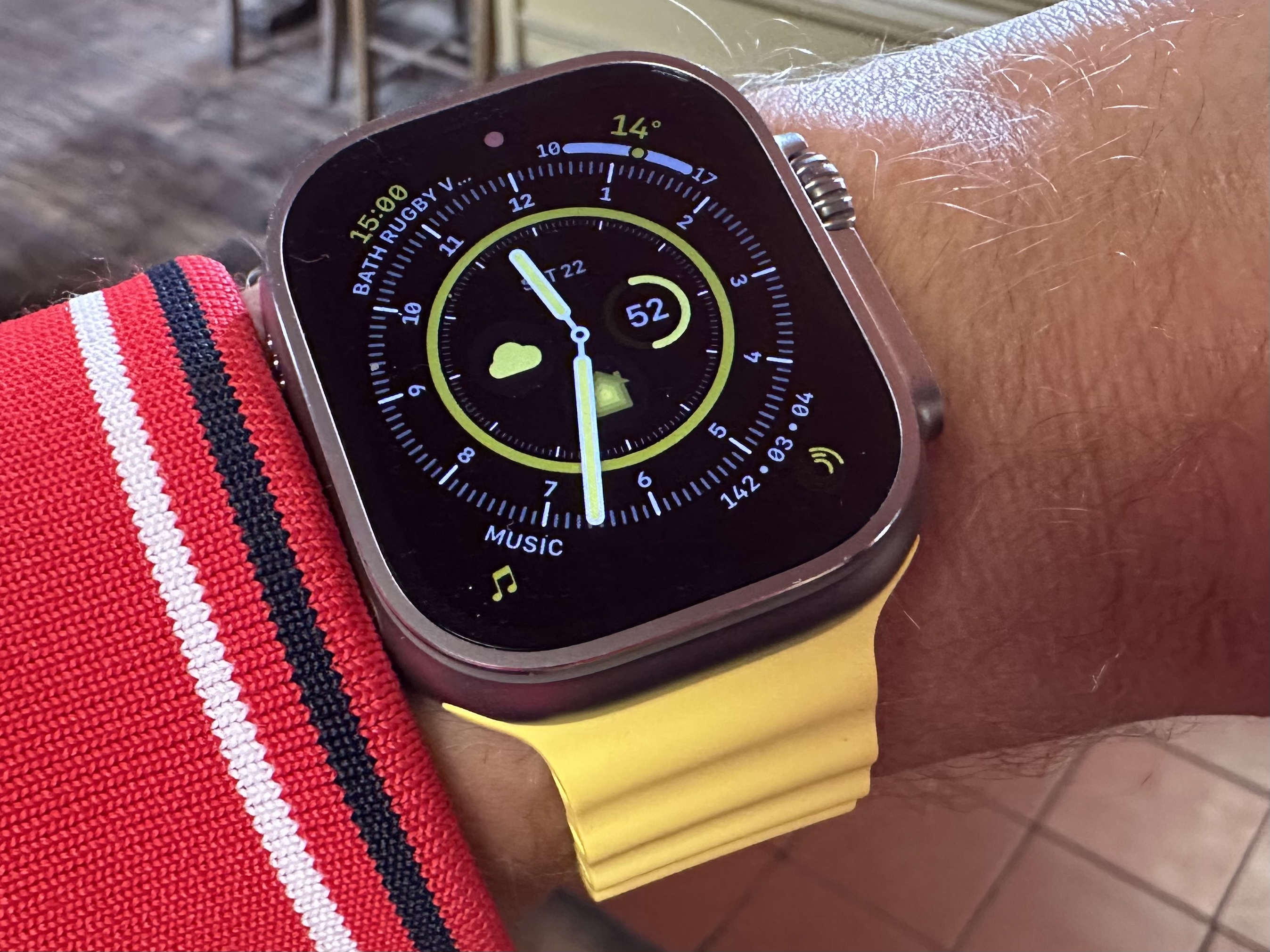
Time for action
The action button is one of the key new features of Watch Ultra – but why have a dedicated button? “When we thought about the ultra-endurance athlete, it made a lot of sense to have a button [which you can] dedicate to do things [like precision start or segments] during a workout without touching the screen,” explains fitness guru Jay Blahnik.
“If you put together a custom workout; let’s say you have an open warm up and you are doing 30 second intervals followed by one-minute recoveries and you want to move past a recovery or an interval. You can do that manually by pushing the action button. When you’re doing those custom workouts, you really don’t want to have to look at the screen.”
A multi-sport feature helps athletes doing any configuration of swimming, biking and running and the watch will automatically detect when you do those activities. “But we know there are endurance athletes that are very, very picky about the exact time with which they consider their swim stopping and their transition time starting and then their bike ride starting. So you can even flip that into manual mode and use the action button [for that],” continues Blahnik.
You’re also able to use the button to get a precise start time rather than having to look at the display, while the Watch Ultra’s screen is able to display six metrics at any one time.
“So perhaps you want time, pace, distance heart rate, but you also at certain times of the run want to focus on our new running metrics like vertical oscillation and ground contact time and stride length. You can have a secondary screen that with just one simple scroll of the digital crown it flips to that screen.”
Location, location
One of the major upgrades on Watch Ultra is its dual GPS. As you’ll know, everyone’s been using and relying on GPS for a very long time and most of that has been on the older L1 frequency, which is almost 50 years old, a project started by the US Department of Defense in 1973 and opened up for public use a decade later.
L5 is the upgrade tech to GPS and has been rolling out over recent years. The two frequencies complement each other. L5 has appeared in more devices over recent years, but this has been a limited selection of smartphones as well as specific devices like Garmin’s dedicated GPSMAP adventure trackers.

“If you think about how GPS works, we are computing the distance between you and the satellites that are 20,000 kilometres above you,” explains Ron Huang. “They’re doing that by doing very precise timing between the satellites and your watch with these signals that are travelling at speed of light. So it’s easily perturbed and easy to incur some error from things like passing through different layers of the atmosphere. There’s a particular band of the atmosphere called the ionsphere that has a lot of plasma that disrupts the radio waves for example. Because L1 and L5 are 400 MHz apart, you can independently correct for that kind of effect.
“But it really becomes special when you combine it with [our] custom algorithms. So for example, we monitor and model your entire arm swing while you’re running so we’re not catching the speed of your arm swing, but the speed of your run.”
Blahnik also cites the example of the Boston Marathon as an example of a dense urban environment where the watch can come into its own “because a good proportion is run right in the city… in the middle of the skyscrapers which is where L1 can be compromised.”
Getting to 60 hours
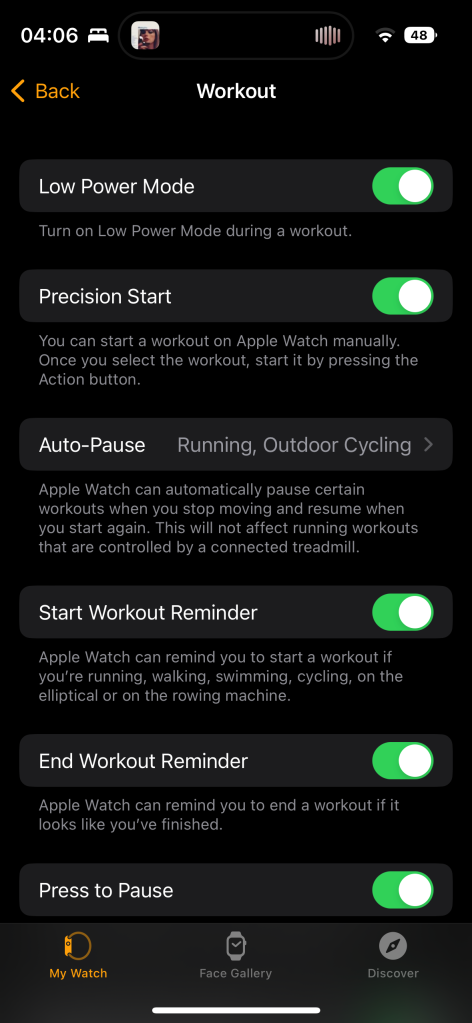
Another key area of focus during Watch Ultra’s development was battery life. It tracks 12 hours of workouts in the standard mode “which of course is way more than enough for any traditional marathon and, for many people [12 hours] gets them into that ultra-marathon distance,” says Blahnik.
When it becomes available via a later update – the ’60 hour’ multi-day adventure mode will be able to track around 15 hours of workouts within that 60 hour span. This feature became available in late October as part of the watchOS 9.1 update.
Blahnik expands on how this mode will be useful for endurance athletes: “There’s 15 hours of workout time in that 60 hours. But if you don’t need to go the full 60 hours and you just wanted to push through for a workout, you really start getting up to big numbers in that 20 plus hour range and we’re excited to see all the ways that our endurance athletes will put that to use. That’s ideal for things like an Ironman race because we believe that most athletes would be able to finish a world championship Ironman race – a 2.4 mile swim followed by 112 mile bike ride and then a full marathon”
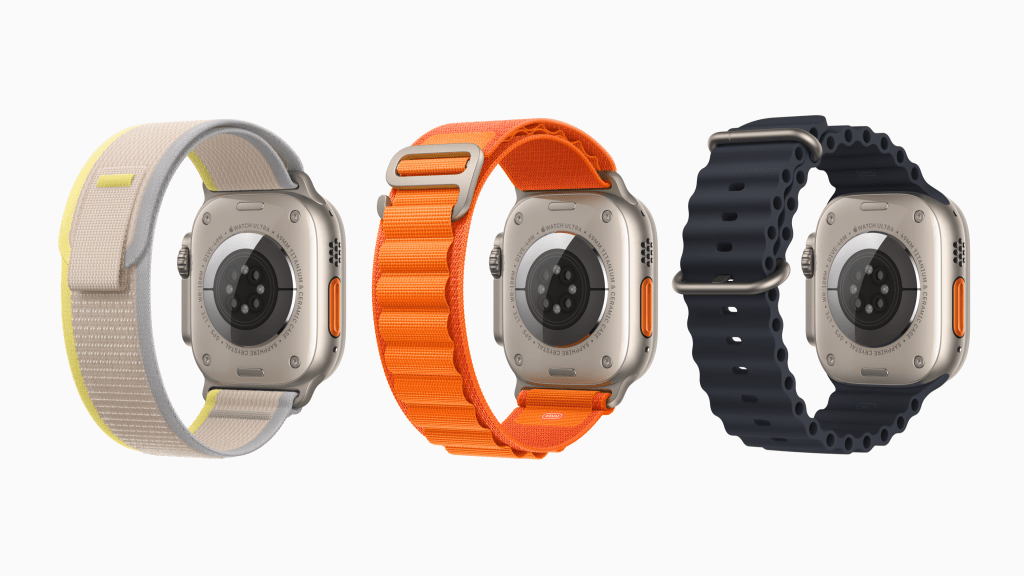
You’re able to activate low power mode in the Apple Watch app on your iPhone. “If you go to the workout section, there’s a new switch that says reduce heart rate during workouts and if you turn that on, that’s how you put yourself into these this multi-day adventure [60 hour] mode. The switch is only applicable if you put the watch [itself] into low power mode.”
Huang expands on how the GPS is affected by low-power modes. “Typically during a workout like hike, we run GPS once a second. But we dialled that back to only run once every two minutes.”
Making sure you get back on track
But despite the lower GPS sampling rate, Huang says your route data and distance won’t be compromised. “We use the gyroscope and accelerometer [together with] map elevation data to know how straight you are between these two points. And if you are hiking on a trail that we have map data for, we will do map matching and snapping to the trail to give you all the credits including little cutbacks and turns that you’re doing. Without trail data we still use that straightness metric to understand that you’re not travelling linear distance between the two points, but you’re actually doing all the meandering, giving you credit for that.”
Backtrack is also part of this, the new feature of the Compass app enabling you to retrace your steps if you get lost. But, as Huang points out, often you don’t know you’re lost until it’s too late. So Backtrack includes an automatic mode that Huang calls a ‘safety net’
“We built a wilderness detector if you will. We look at Wi-Fi signals because when there’s no Wi-Fi today, it’s likely to be wilderness and look at your past usage history to see if it’s a place you’ve been to before. It will even remember when you went from driving to walking because that’s [probably where] we want to get back to. And so when Apple Watch Ultra detects [this], it automatically starts recording the trace for you. We can do that with very, very minimal battery impact.
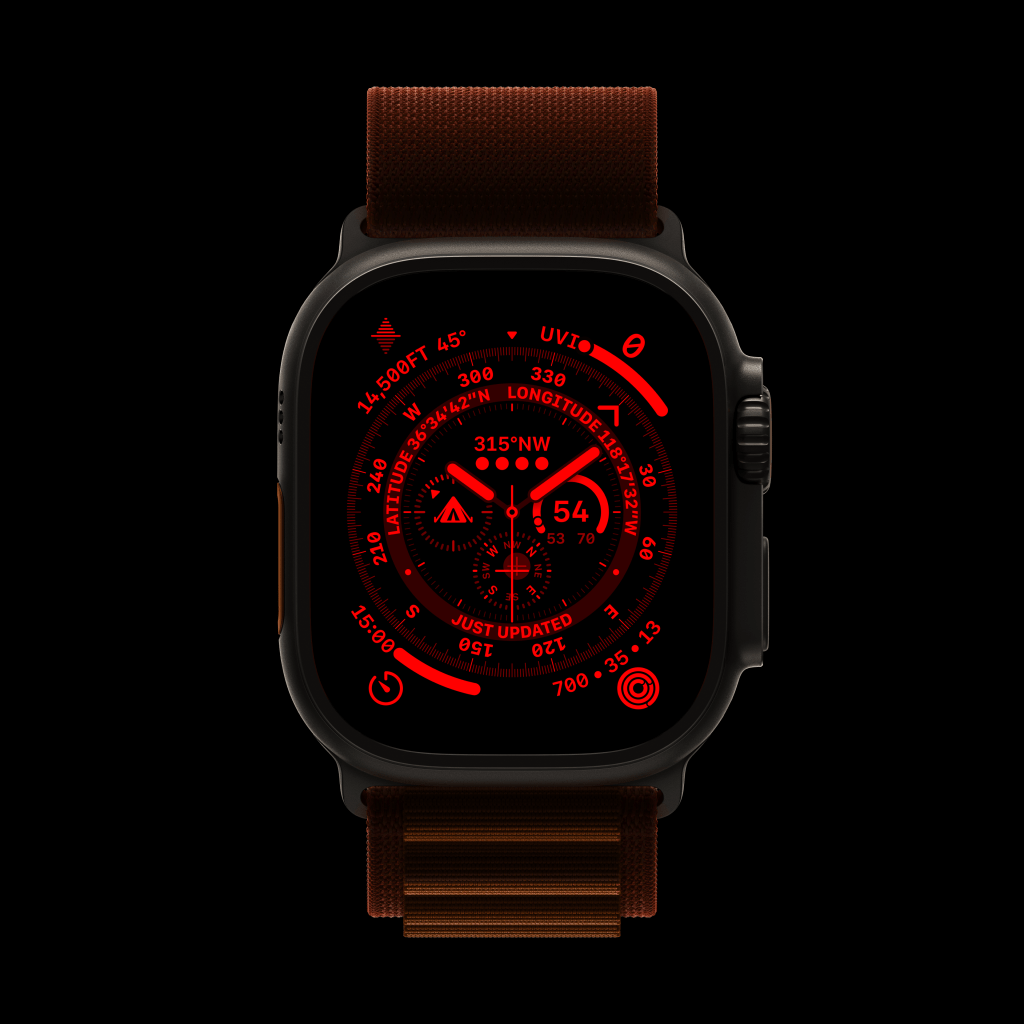
We ask how cellular data impacts battery life, too. “Staying registered on the cellular network is pretty expensive from [a battery life] standpoint, right?” says Huang. “And so what we do in this mode is not remain connected the entire time. But when you launch like an app that wants to use data, whether it’s a phone app or data and so forth, we connect on demand.
“And the team has done a lot of work to make sure that connection can be as fast as it can be. But of course, on top of that, apps that you launch in the background… also receive push [notifications]. You want to get those even in low-power mode. And so what we do is then periodically the watch will re-register back on the network, fetch your data and cut off cellular again.”
Under the sea
Watch Ultra is designed with water-based activities including diving in mind and when you submerge it, the Depth app will show you how deep you are. “This is based on not just the pressure sensor, but it’s combined with the accelerometer, gyroscope, and even the touchscreen to help determine whether your watch is in air or in water,” adds Huang.
“When you’re in water the whole experience starts automatically [when you’re deeper than 1m] and adapts to your sport and activity. And when you come out of the water, it goes back to your ordinary watch face automatically. We have a dedicated water temperature sensor that we worked a lot on the algorithms for so that [when you] submerge into water we catch up to the actual water temperature very quickly.”
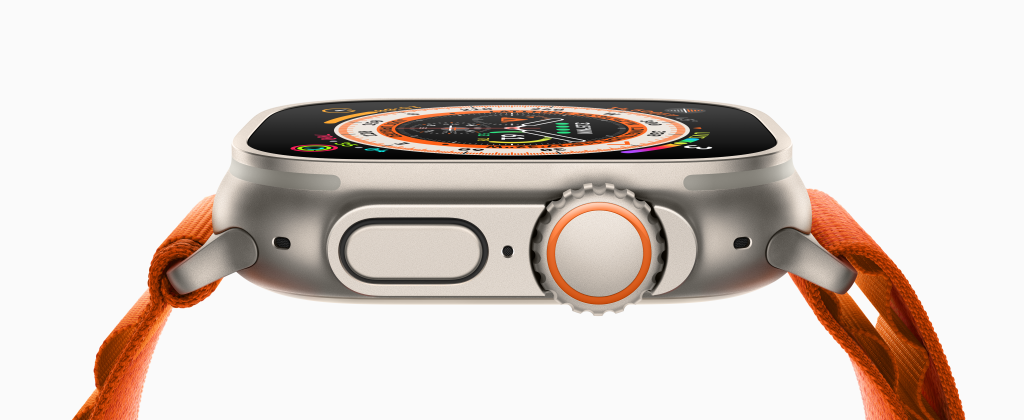
Huang explains how for water sports, the team built a 23 feet long water sled to test Watch Ultra so they could accelerate the Apple Watch up to 45 miles per hour to ensure it can handle all the forces present when doing these activities.
Ng explains further: “it’s different than the two temperature sensors that we use for night time wrist temperature. Those are actually in different locations. Those two temperature sensors – one is on the top front crystal, one is on the back crystal touching your wrist. The water temperature sensor is actually in that small hole above the crown – that aperture actually allows for both the water temperature sensor as well as the depth sensor.
“Apple Watch has become essential for so many users over so many years now” considers Ng. And we’ve heard from so many of them, they want to use Apple Watch everywhere they go. And that includes mountains, deserts and the ocean. We think our users are going to be very excited about it.”
Also read: Our guide the best fitness headphones

